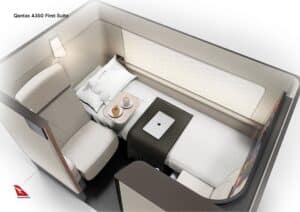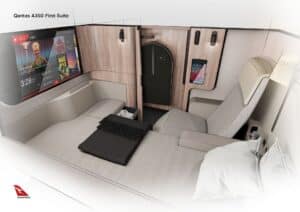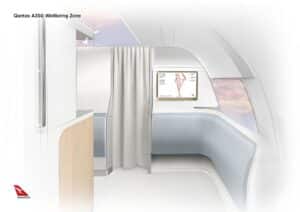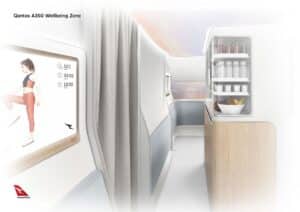Aerospace
Qantas will place the largest order in its 102-year history, aiming for 150 Airbus planes worth $34 billion.
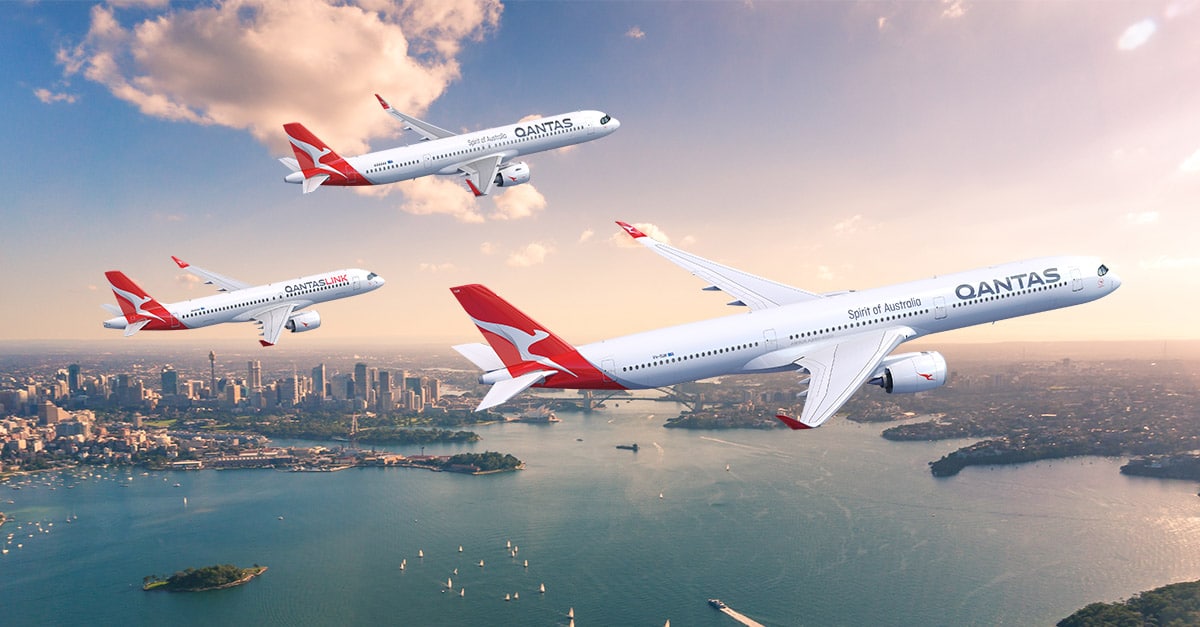
- Qantas Project Sunrise has been approved, with an order for 12 x Airbus A350s capable of flying direct from Australia to any other city, including New York and London, beginning in late 2025 from Sydney.
- Domestic fleet renewal will begin in late 2023, with an order for 40 x A321XLRs and A220 aircraft; 94 purchase order rights will be spread out over at least a decade.
- Significant reductions in emissions, operating costs, and passenger comfort when compared to retiring aircraft.
- There will be no change to the capital guidance for FY23; order structure will be consistent with the Group Financial Framework.
The Qantas Group announced today a number of significant fleet decisions that will reshape its international and domestic networks over the next decade and beyond.
These decisions will also improve journeys for millions of people each year, as well as create over 1,000 jobs and numerous career advancement opportunities at the national carrier.
Domestically, as part of ‘Project Winton,’ Qantas will begin the renewal of its narrow body jets with firm orders for 20 Airbus A321XLRs and 20 A220-300s as its Boeing 737s and 717s are gradually retired. The first of these aircraft will begin to arrive in late calendar 2023, with the order including purchase right options for an additional 94 aircraft to be delivered until at least 2034.
On a global scale, 12 Airbus A350-1000s will be ordered to operate nonstop ‘Project Sunrise’ flights from Australia to cities such as New York and London. These aircraft will provide market-leading passenger comfort in each travel class, with services set to begin from Sydney by the end of calendar 2025.
All of these next-generation aircraft, with lower emissions, longer range, less noise, and better economics, will improve people’s travel around Australia and around the world.
Customers can anticipate more direct routes and, as a result, less total travel time. They can anticipate increased cabin comfort. Furthermore, due to different aircraft sizes for peak and off-peak times, they can expect more flight options at different times of day, particularly on domestic and regional routes.
IN REGARD TO THE ORDER
- Orders have been placed for 12 Airbus A350-1000s for Project Sunrise. Deliveries will begin in 2025 and will be completed by 2028.
- Firm orders have been placed for 20 A321XLR and 20 A220-300 aircraft for Project Winton, which will begin the renewal of Qantas’ narrow body fleet as its 95 Boeing 737 and Boeing 717 aircraft retire. A220 deliveries will begin in late calendar 2023, with A321XLR deliveries beginning a year later in late calendar 2024.
- A further 94 purchase right options are available across the A320 and A220 families, with significant flexibility in delivery timing (over a 10-year period) and aircraft type.
- Combines with Jetstar’s existing order of 109 A320s (plus purchase rights) to form a single Qantas Group narrow body order for 299 aircraft (half of which are firm orders).
- Combines with Jetstar’s existing order of 109 A320s (plus purchase rights) to form a single Qantas Group narrow body order of 299 aircraft (half of which are firm orders and half are purchase right options), with the option to reduce that order by selecting any variant from the A320 and A220 families.
- Jetstar confirmed today that it will convert 20 of its existing A320 family orders to A321XLRs, which have the potential to fly short-haul international routes, with deliveries beginning in the second half of calendar 2024. (The first tranche of this existing order – 18 A321LRs – is scheduled to arrive in July 2022.)

Aerospace
Which is bigger 777x or 787 aircraft ?

The 777X is a new series of the Boeing 777 family and is designed to be larger and more efficient than its predecessor. It features two variants: the 777-8 and the 777-9, being the larger of the two.
The Boeing 777X emerges as the larger sibling within the Boeing family, representing a significant leap forward in both size and efficiency. Comprising two variants, the 777-8 and the 777-9, the latter takes the crown as the larger of the two. With its expansive fuselage and impressive wingspan, the 777X is tailored for long-range journeys and boasts a substantial passenger capacity.
On the other hand, the Boeing 787, affectionately known as the Dreamliner, occupies a niche in the market as a smaller yet formidable aircraft designed for medium to long-range flights. Its distinguishing feature lies in its composite fuselage, a technological marvel that renders it lighter and more fuel-efficient compared to conventional aluminum counterparts. The Boeing 777X is larger than the Boeing 787 aircraft.
When it comes to passenger capacity, the 777-9 reigns supreme, typically accommodating a sizeable contingent of 400-425 passengers in its standard configuration. In contrast, the 787, with its more modest dimensions, typically carries between 240-290 passengers, depending on the variant and layout.
One of the remarkable innovations introduced with the 777X is its folding wingtips, a feature designed to address the logistical challenges of accommodating such a large aircraft in conventional airport gates. These folding wingtips enable the 777X to retract its wings, allowing it to fit into gates designed for smaller aircraft while still reaping the benefits of an extended wingspan during flight, thereby enhancing fuel efficiency and operational flexibility
Aerospace
China Secures Production Certificate for Mass Production of Pilotless eVTOL Aircraft

The first passenger-carrying pilotless electric vertical takeoff and landing (eVTOL) aircraft in the world, the EH216-S, has received the Production Certificate for its eVTOL aircraft from the Civil Aviation Administration of China (CAAC).
This is a significant milestone for EHang Holdings Limited, the leading UAM technology platform company in the world. This outstanding accomplishment is another big step towards mass manufacturing for the eVTOL aircraft and the ensuing commercial operations, building on the ground-breaking acquisition of the Type Certificate and the Standard Airworthiness Certificate for the EH216-S.
The PC is a crucial certificate that the aircraft maker receives from the CAAC, the country’s aviation authority. By obtaining this certificate, EHang has demonstrated that it has set up a quality management system for mass production that satisfies the airworthiness regulation standards set forth by the CAAC, and the company has been given permission to continue producing mass quantities.
It is also a strong guarantee of the calibre of the goods made by EHang. Raw materials, supplier management, manufacturing organisation, production quality control, aircraft pre-delivery test, after-sales repair and maintenance, etc. are all included in the mass production quality management system for the EH216-S.
To ensure that every aircraft and its components that roll off the production line strictly adhere to the approved type design and safety requirements, the system sets clear guidelines and documentation for every step in the production procedure. This ensures comprehensive traceability and safety control.
Aerospace
Four Airbus A380 Superjumbos lined up to be scrapped

In a strategic move aimed at reclaiming valuable resources from the iconic Airbus A380 aircraft, VAS Aero Services and Dr. Peters Group have announced a significant collaboration.
This partnership marks a milestone in aviation logistics and aftermarket services, with four of these colossal planes slated for teardown and redistribution of used serviceable material (USM).
The venture between VAS Aero Services, renowned for its expertise in aircraft dismantlement, and Dr. Peters Group, a prominent Germany-based investment fund management firm, underscores a commitment to sustainable aviation practices. This isn’t their first foray into scrapping A380s; their successful partnership has already seen the dismantlement of these aircraft, making them pioneers in this niche.
Under the agreement, the latest consignment brings the tally to eight A380s entrusted to VAS by Dr. Peters Group. Managing Director Christian Mailly of Dr. Peters Group emphasized the trust placed in VAS, citing their unparalleled capabilities in dismantlement and aftermarket sales network. It’s a strategic move in response to the growing demand for quality USM parts, particularly with the resurgence in reliance on the A380.
Notably, the teardown process will be carried out at various locations, optimizing the positioning of harvested parts to cater to different markets. While some parts will be positioned in Europe to support operators in the region and the Middle East, others will remain in the Asia-Pacific region. This meticulous strategy ensures efficient access to spare parts, benefiting MROs and airlines across these markets.
The decision to retire these A380s comes at a time when operators are reassessing fleet strategies amidst evolving market dynamics. Despite initial plans for quick retirement due to the emergence of more fuel-efficient alternatives, factors such as a rebound in long-haul demand and delays in new widebody deliveries have prompted operators to reconsider. The A380, with its unique capacity and capabilities, presents a practical solution for short-term capacity management.

